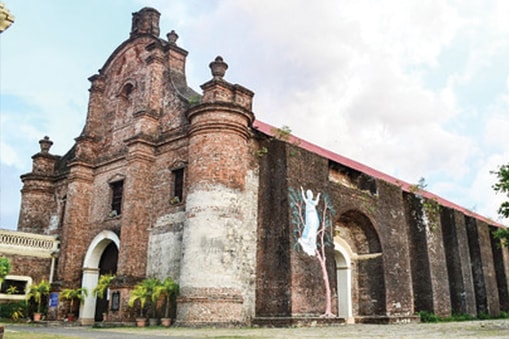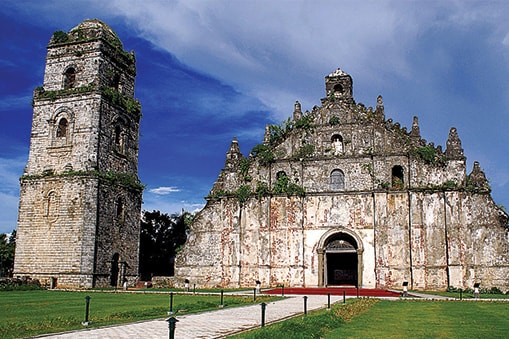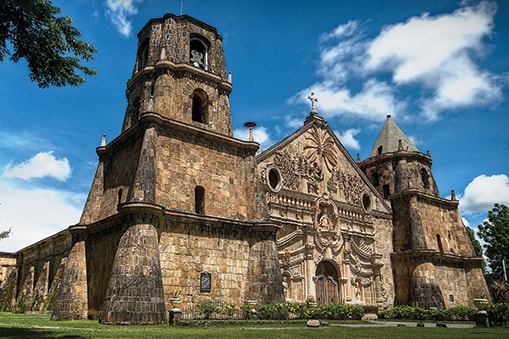It is common knowledge that the Philippines was colonized by the Spaniards for three centuries. In the year 1521, Spanish explorer Ferdinand Magellan stepped foot on Philippine shores and declared the country as a colony of the Spanish empire. Seeing its natural beauty, its perfect geographical location for international barter and trade, and its bountiful resources, the Philippines became a prized colony of the Spaniards.
This colonization led to the Filipino culture and traditions acknowledged and followed up until today. Catholicism is the predominant religion in the country, local Philippine dialects often borrow Spanish terms and words, and cultural traditions such as close family ties and honoring Catholic traditions are just some of the things that truly reflect how big the impact of the colonization was to Filipinos.
The Spaniards also influenced local arts and architecture. One prominent example of these are Baroque-style architectures of churches that were built during the colonization. Some of the oldest churches in the Philippines were built during the Spanish colonization.
Baroque-style Architecture
Baroque-style architecture was first introduced by the Catholic Church in the early 17th century as a way to contradict the Protestant church’s extravagant architecture with grander, taller and highly decorative Catholic institutions. Baroque architects took inspiration from the basic elements of Renaissance designs and exaggerated these. By enhancing domes and colonnades, making them higher and more dramatic, Baroque churches have become art institutions just as much as they are Catholic buildings.
A prominent characteristic of Baroque architecture are clusters of sculpted angels and colorfully-painted religious figures that decorate the churches’ ceilings. Huge and eloquent grand staircases are often used as focal elements, too. Twisted columns and strategic placement of where light is reflected are also characteristics of this kind of art style.
The 4 Philippine Baroque Churches Recognized by UNESCO
The Philippines have four centuries old Catholic institutions that were made with Baroque design. These four beautiful religious establishments are recognized by UNESCO and are considered National Heritage sites since they were inscribed in 1993.
1. Church of the Immaculate Conception of San Agustin, Manila

Built in 1571, the Church of the Immaculate Conception of San Agustin in Manila is known to be the oldest stone church in the Philippines. Situated in the walled city of Intramuros in Manila, it was first built by the Augustinian order and from its inception, it was witness to many historical events.
It was initially made with nipa and bamboo until it was burned in 1574 by the Chinese pirate Limahong. It was reconstructed using wooden materials a year after but was again burnt by fire in 1583. In 1587, it was rebuilt with a stone church and monastery.
The beautiful religious establishment has amazing high Baroque style features like wall buttresses separating collateral chapels. It also has gorgeous ceiling paintings that lend the establishment more grandeur.
The San Agustin Church has been standing for more than 400 years. In 1762, British forces crashed and looted the establishment while in 1898, it was the location where Americans and Spaniards met to discuss and sign the surrender of Manila to the Americans. In World War II, the San Agustin Church became a concentration camp for prisoners while during the Battle of Manila in 1945, the Japanese invaders held religious servants and local residents’ hostage in the church.
This UNESCO World Heritage site is a must-see for any local or foreign traveler for so many reasons – its stunning architectural details, its religious background, its history. It is a cultural landmark worth visiting.
2. Church of Our Lady of the Assumption, Ilocos Sur

Also known as the Santa Maria Church, Ilocos Sur’s pride is the Church of our Lady of the Assumption. The UNESCO World Heritage Site sits on a hill surrounded by a defensive wall, an unlikely location compared to other town churches nearby. It also has a convent that lies parallel to the façade of the religious establishment, with a separate bell tower in the center of it all.
Beautifully made with brick walls, the church’s huge, rectangular walls do not have much ornaments aside from carved side entrances and strong buttresses. To reach the church, one must climb an 85-step stairway made with granite rock. It leads to a courtyard in front of the church’s doorway, which lends a great view of the town of Santa Maria.
The church was constructed by Augustinian Order in 1765 initially as a chapel of Narvacan. In 1810, the bell tower was added. Missionaries used it as a temporary residence while in Ilocos Sur. The church also became a citadel and watchtower by Spanish colonizers.
3. Church of San Agustin, Ilocos Norte

The Church of San Agustin, more popularly called the Paoay Church, is located in Ilocos Norte. Because the Philippines experiences different natural disasters, this particular religious structure is a prime example of what an Earthquake Baroque-style architecture is. Built in 1694, the historical icon of Ilocos Norte has experienced disastrous earthquakes and other natural calamities but is still standing strong to this day.
The Augustinian missionaries founded the church in 1593. Its construction was spread over a century – from 1604 to 1704. The convent was then added 3 years after, while the church’s bell tower was established in 1793. It was only in 1896 that the religious institution was inaugurated.
Because of its resilience, the Paoay Church was designated as a National Cultural Treasure by the Philippine government in 1973. In 1993, it was recognized as a UNESCO World Heritage Site alongside 3 other Baroque-style churches in the country.
4. Miagao Church, Iloilo

Also known as the Santo Tomas de Villanueva Parish Church, the Miagao Church is one of the most visited sites in Iloilo. It is also known as a Baroque fortress church as it was used not just as a place of worship but as a fortress against Muslim invaders.
Before the founding of Miagao, there were two churches that were built in the town but were burned down by Muslim raiders and pirates. It was only in 1786 that the construction of the Baroque church was started and was fully completed in 1797.
The church’s façade is nothing less of spectacular. It is delicately decorated with two huge watchtower belfries on each side. A remarkable part of the church’s façade is a coconut tree that symbolizes the tree of like where St. Christopher holds on. The rest of the church’s façade features the everyday life of the people of the Miagao town during the 17th century.
Honorable Mention
While the following religious establishment failed to become part of UNESCO’s World Heritage Sites, the Church of San Miguel Arcangel in Argao, Cebu is a sight to behold. While it has undergone three restorations due to natural disasters, the church stands today as a representation of strength and resilience.
The original Mexican pipe organ, the church’s main altar, Cebuano painter Raymundo Francia’s depiction of the victory of St. Michael over Lucifer and muralist Canuto Avila’s painting of bibilical manifestations of angels are just some of the notable characteristics of this beautiful institution.
A Marriage of Art and History
These Baroque-style architectural institutions are definitely a beautiful manifestation of art and history that has been experienced by the country. Catholic or not, these Baroque churches are heritage sites that are worth seeing and experiencing.
You might also wanna check City of Love: Iloilo City Hailed as the “Wakanda” of the Philippines.




